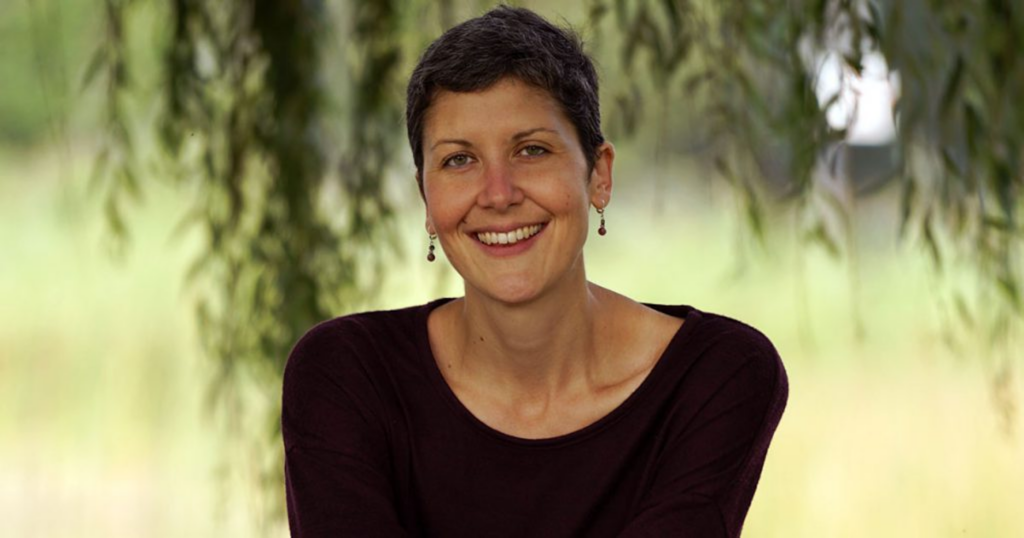Initially committed to a career in the arts, in the end Ingrid Verduyckt branched out into speech therapy. Today she emphasises the importance of combining the two disciplines by joining the cinEXmedia partnership.

Hugo Jacquet
Ingrid Verduyckt owes her interest in the “breakdown” of communication to her own experience. Already when she was quite young, she served as an interpreter for adults of her older brother with Down syndrome, which affects a person’s cognitive faculties and language development. She also grew up surrounded by French, Flemish and Swedish, as the family had left their native Belgium to live in Scandinavia: “I became that person who does not know how to communicate. I have experienced the social consequences of communication deemed atypical”.
While she was committing herself to a career in the visual arts (and in particular in film history and set design), her parents pressured her to obtain a “serious degree”. Speech therapy, which she discovered almost by chance in a university brochure, then became an obvious choice. The profession enabled her to acquire invaluable knowledge which led her to Quebec, where she nevertheless found “professional practices that are not always adapted to the new needs of society”.
Rethinking Pathologisation
This observation, which quickly motivated her research, was also an opportunity to make her profession compatible with her early artistic ambitions. Verduyckt, who is interested in the concept of beauty in aesthetics, demonstrated in the course of an initial project as part of a master’s degree that “there exists an almost complete correlation between a so-called ‘pathological’ voice and a voice seen as ‘unaesthetic’”. “People attribute a whole range of negative qualities to a voice seen as feeble: they will say that the person is poor, lazy or sick”, she explains. But what are the medical criteria for determining what is normal and what is not? In the end, I’m not interested in language as such, but rather in the social processes which determine ‘normalcy’”.
Medicine, which distinguishes, therefore, between normalcy and pathology, “considers only a part of the communicative assemblage”, Verduyckt remarks. “Science is concerned only with diagnosing people rather than asking how to facilitate overall communication within an ecosystem”. This is why she explores every aspect, in particular social and cultural ones, of the study of communication. In a project carried out with people suffering from Parkinson’s disease, for example, she focused not only on the problems the illness causes for elocution; she also came up with communication strategies for their caregivers: listening positions, asking more precise questions, the ways people with the illness can be asked to reformulate their requests, etc.
Verduyckt also underscores the importance of technology: “People could wear earphones equipped with artificial intelligence, which would interpret and reformulate what our interlocutor is trying to tell us. This is what I mean when I speak of changing our practices. We can broaden our vision so as not just try to ‘renormalise’ the person seen as being ill”.
Dissemination and Interdisciplinary Study
Although her participation in the cinEXmedia partnership is only beginning, Verduyckt already expresses her “relief” that she will see intersectoral initiatives come to fruition: “that helps me believe that it is possible to change things. It’s exceptional to have someone like Santiago Hidalgo [executive director of Laboratoire CinéMédias], who is so open to all sorts of projects”.
In cinema, Ingrid Verduyckt questions the notions of representation and making visible: “I think it is fairly rare to show the inner life of someone with a language disorder, to show what it is like to not succeed in communicating. And the inverse could very well be done, meaning to show what it is like to live quite satisfactorily with such a disorder. Cinema also makes it possible to show inspiring figures such as Joe Biden, Albert Einstein and any other international star who stutters. Nevertheless, this could become pernicious if cinema makes people think that one must counter-balance a language disorder with exceptional talent”.
With respect to representation, Verduyckt believes that “social media are the media which change things”. In her view, commercial cinema, on the contrary, has no interest in depicting “communicational diversity” in a nuanced manner, despite a few recent exceptions, such as John Krasinski’s A Quiet Place (2018). “One can’t imagine that tomorrow, with no advance notice, Marvel will show a stuttering Iron Man”, she remarks. “Social media, for their part, show this diversity. People who are very far apart geographically and share the same condition can find each other. They take back power and depict themselves the way they want to. Social media draws the public upwards”.
When one asks her how she intends to present her research to the general public, she replies that “this question must be considered very early in the project. It takes money and expertise which the researcher does not necessarily have. We need scholarly outreach agents”.
Vocavie and Art Therapy
Verduyckt also regrets the way practice methods compartmentalise expertise. In fact one must wait a long time for a specialist to become available for a diagnosis to be made and to come to the assistance of people affected by communication disorders, at a time when researchers are already in possession of paths to solutions. With the organisation Vocavie, which she co-founded, Verduyckt has established “vocal stimulation sessions for people with Parkinson’s, followed by group moments which help build a community”. “Disseminating knowledge passes through this connection of confidence, this connection of goodwill among the academic, clinical and societal worlds”, she adds. “Whatever the aesthetic quality of our publications on Instagram or of our podcasts, in the end what counts is the impact of the connection with the public”.
Several kinds of alternative therapy are employed in the research projects in which Ingrid Verduyckt is involved. This is the case in particular with the team of clinicians in the group Drama Therapy and Art Therapy for Integration, which organises art therapy workshops at the Montreal Museum of Fine Arts to enable people with communication disorders to engage in different forms of expression. “Art therapy is used as a pretext to stimulate speech”, Verduyckt explains. “When we look at an artwork we are making, we can ask ourselves what we see, what it evokes in us. Art is both concrete because it is there before us, and abstract because we can project all kinds of things onto it”.
Ingrid Verduyckt thereby believes that she has come “full circle”: her early love for the arts has in the end found its echo in her clinical practice, in the service of the people she hopes to assist.
